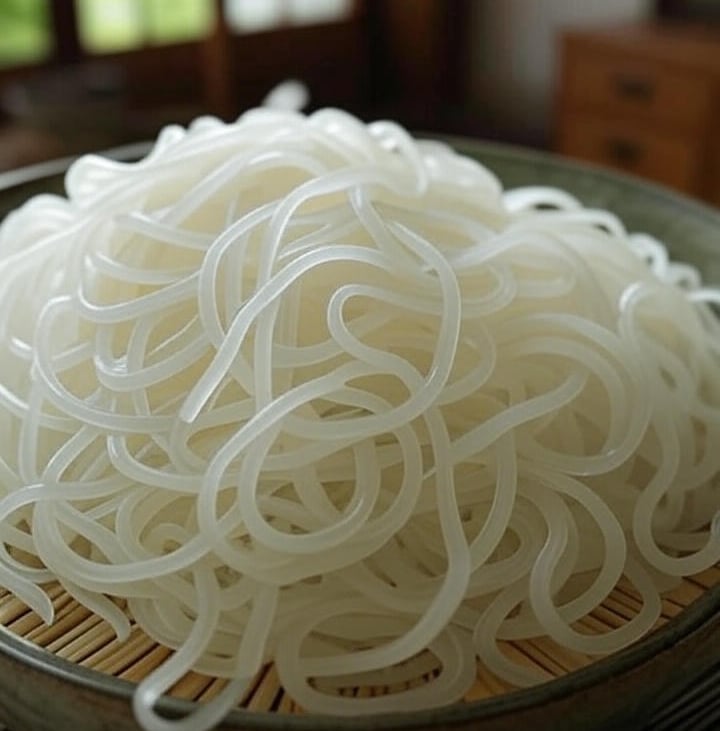Welcome to Noodles of Asia ! - A Woke Noodle Blog
Unveiling Shirataki Noodles: A Journey Through Japan’s Low-Calorie Gem


Hey there, noodle enthusiasts! If you've ever enjoyed a dish of slippery, nearly translucent noodles with a unique texture, you’ve likely tasted shirataki noodles. These low-calorie wonders, made from the konjac yam, are a cherished staple in Japanese cuisine, prized for their health benefits and versatility. Whether served in a warm soup or a cold salad, shirataki noodles offer a guilt-free delight. In this post, we’ll explore their origins, history, some fascinating facts, and a few famous recipes to inspire your next culinary adventure. Let’s dive in!
Origins and History of Shirataki Noodles
Shirataki noodles, meaning "white waterfall" in Japanese due to their appearance, originated in Japan over 1,500 years ago. Derived from the konjac yam (also called konjac root or elephant yam), their production began in the Kansai region, where they were used in Buddhist temple cuisine for their plant-based, low-calorie properties. By the Edo period (1603–1868), shirataki became popular among the general population, especially in dishes like sukiyaki. In recent decades, their health benefits have propelled them to global fame, appearing in diets worldwide.
Interesting Facts About Shirataki Noodles
Shirataki noodles aren’t just food—they’re a health revolution! Here are some intriguing tidbits:
Regional Variations Galore: From Japan’s sukiyaki with shirataki to oden with a soy-flavored broth, and modern Western stir-fries, each preparation highlights their adaptability.
Noodle-Making Craft: Traditionally, shirataki are made by grinding konjac yam into a flour, mixing with water to form a gel, and shaping into noodles, resulting in their unique texture.
Dietary Appeal: Nearly calorie-free and high in glucomannan fiber, shirataki are a favorite for weight loss and keto diets.
Global Fusion: In the West, they’re used in creative dishes like shirataki pasta with marinara or stir-fried with global spices.
Cultural Significance: In Japan, shirataki symbolize simplicity and health, often featured in traditional meals and festivals.
These facts underscore shirataki noodles’ journey from a regional specialty to a global health food.
Famous Shirataki Noodle Recipes
Shirataki noodles’ charm lies in their versatility. Here are some iconic recipes, from comforting classics to creative twists. (Note: These are overviews—adjust to taste and check full recipes online for details.)
Sukiyaki: Japanese hot pot with shirataki, beef, tofu, and veggies in a sweet soy broth—a hearty winter dish.
Oden: Japanese simmered dish with shirataki, daikon, and fish cakes in a light soy broth—warm and soothing.
Shirataki Stir-Fry: Stir-fried shirataki with garlic, soy sauce, and mixed veggies—a quick, low-carb option.
Shirataki Salad: Cold shirataki tossed with sesame oil, cucumber, and chili—a refreshing summer treat.
Konjac Noodle Soup: Clear broth with shirataki, mushrooms, and green onions—a light, healthy bowl.
Shirataki Alfredo: A keto-friendly twist with shirataki, creamy almond sauce, and parmesan—indulgent yet light.
For a hands-on challenge, try making shirataki at home: Process konjac yam into flour, mix with water, shape into noodles, and boil—or use pre-packaged versions for ease.
Wrapping It Up
Shirataki noodles are more than just food—they’re a bridge from ancient Japanese traditions to modern health-conscious kitchens, with endless variations to explore. Whether you’re craving a warm bowl on a cool evening or a light dish in warm weather, shirataki deliver. Next time you’re at a Japanese restaurant or in your kitchen, give one of these recipes a try. What’s your favorite shirataki dish? Share in the comments—I’d love to hear! Until next time, happy slurping! 🍜
